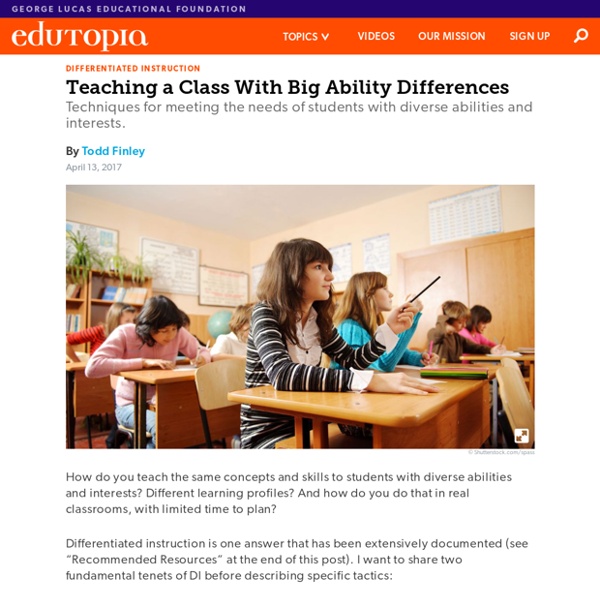Mobile
Authors Edited by Samuel C. Silverstein, College of Physicians and Surgeons, New York, NY, and accepted by the Editorial Board July 14, 2015 (received for review March 17, 2015)
Revamp Your Syllabus: A Mini-Case Study - Norman Eng - Medium
Ghastly, in retrospect described Pam’s reaction. Actually, her syllabus is probably a lot like most of ours. As such, it serves as a perfect mini-case study for the upcoming term. Pam’s challenge was simple: Make the course inviting. Having read my ebook, Create an Engaging Syllabus: A Concise, 7-Step Guide for Professors, she implemented several ideas, four of which we’ll share below.
Bringing Inquiry-Based Learning Into Your Class
In the shallow end of the Types of Student Inquiry pool, Structured Inquiry gives the teacher control of the essential question, the starting point—for example, “What defines a culture?” or “What is the importance of the scientific method?” These questions are not answered in a single lesson and do not have a single answer, and, in fact, our understanding of an essential question may change over time as we research it. In Structured Inquiry, the teacher also controls specific learning activities, the resources students will use to create understanding, and the summative assessment learners will complete to demonstrate their understanding. In Controlled Inquiry, the teacher provides several essential questions. Learners unpack several resources predetermined by the teacher to provide valuable context and rich meaning relative to the essential questions.
‘Not a Math Person’: How to Remove Obstacles to Learning Math
Stanford math education professor Jo Boaler spends a lot of time worrying about how math education in the United States traumatizes kids. Recently, a colleague’s 7-year-old came home from school and announced he didn’t like math anymore. His mom asked why and he said, “math is too much answering and not enough learning.” This story demonstrates how clearly kids understand that unlike their other courses, math is a performative subject, where their job is to come up with answers quickly. Boaler says that if this approach doesn’t change, the U.S. will always have weak math education. “There’s a widespread myth that some people are math people and some people are not,” Boaler told a group of parents and educators gathered at the 2015 Innovative Learning Conference.
Five great back to school ideas for social studies teachers
(Several years ago, I wrote a quick post on strategies that can be used during the first week of school. I updated the content and posted it below.) We have two very simple unbendable, unbreakable rules in our house. No Christmas music allowed before Thanksgiving. No talking about school before August. It’s August.
10 Ways Teacher Planning Should Adjust To The Google Generation
10 Ways Teacher Planning Should Adjust To The Google Generation by Terry Heick For the Google Generation, information isn’t scarce, and knowing has the illusion of only being a search away. I’ve written before about how Google impacts the way students think. This post is less about students, and more about how planning resources like standards and curriculum maps might respond accordingly. Curriculum maps are helpful little documents that standardize learning.
Student Goal Setting Templates, One Word Examples, & Vision Boards
“Goals. There’s no telling what you can do when you get inspired by them. There’s no telling what you can do when you believe in them. And there’s no telling what will happen when you act upon them.” – Jim Rohn
What Anxiety Does To Your Brain And What You Can Do About It
We all deal with anxiety in some form day to day. But anxiety can be a much stronger, more fearsome force for many people — one that never goes away. What is anxiety exactly, and what's going on in your mind (and your body) when anxiety strikes? How do you cope when it takes hold?
De la Différenciation Pédagogique à la Personnalisation des apprentissages
Your report has been submitted. There was a problem submitting your report. Please contact Adobe Support.
Flip Your Back-to-School Night
Back-to-School Night is the one evening each year when I have the opportunity to connect face-to-face with my students’ parents. Unfortunately, not all parents can attend Back-to-School Night. Some of my parents work at night or they are at home with their other children.
Inquiry Learning
From HookED Wiki HOT Inquiry Self Assessment Rubrics Toc(For Professional Discussion within schools working with Hooked on Thinking on Inquiry Learning) HOT Rubrics for Stages in Research Process: File:HOT RESEARCH INQUIRY RUBRIC BLANK.pdf HOT Rubrics for Stages in Inquiry Process.
First Day of School? Here’s How to Get Students Thinking – Copy / Paste by Peter Pappas
As a social studies high school teacher, I faced over 25 years of the first day of school. When I first began teaching, I did usual thing – working through the class list (“do you prefer Patrick, or Pat?), a dry recitation of the class rules, passing out the textbooks. Blah, blah, blah – think of the message it sent to my students. As my teaching style evolved from the lecture / work sheet model into a more engaged learning environment, I redefined how I wanted to introduce my students to my course. I also came to understand that it was imperative that I get all my students to contribute a few comments to the class during those first few days.
Education Research Highlights From 2015
2015 was a great year for education research. fMRI technology gave us new insight into how exercise can improve math ability by changing the structure of children's brains (#13 below). We saw how Sesame Street's 40-year history has made an impact on preparing young children for school (#7). Several studies reinforced the importance of social and emotional learning for students (#2, 5, and 9). Two must-read publications were released to help educators understand how students learn (#4 and 11).



